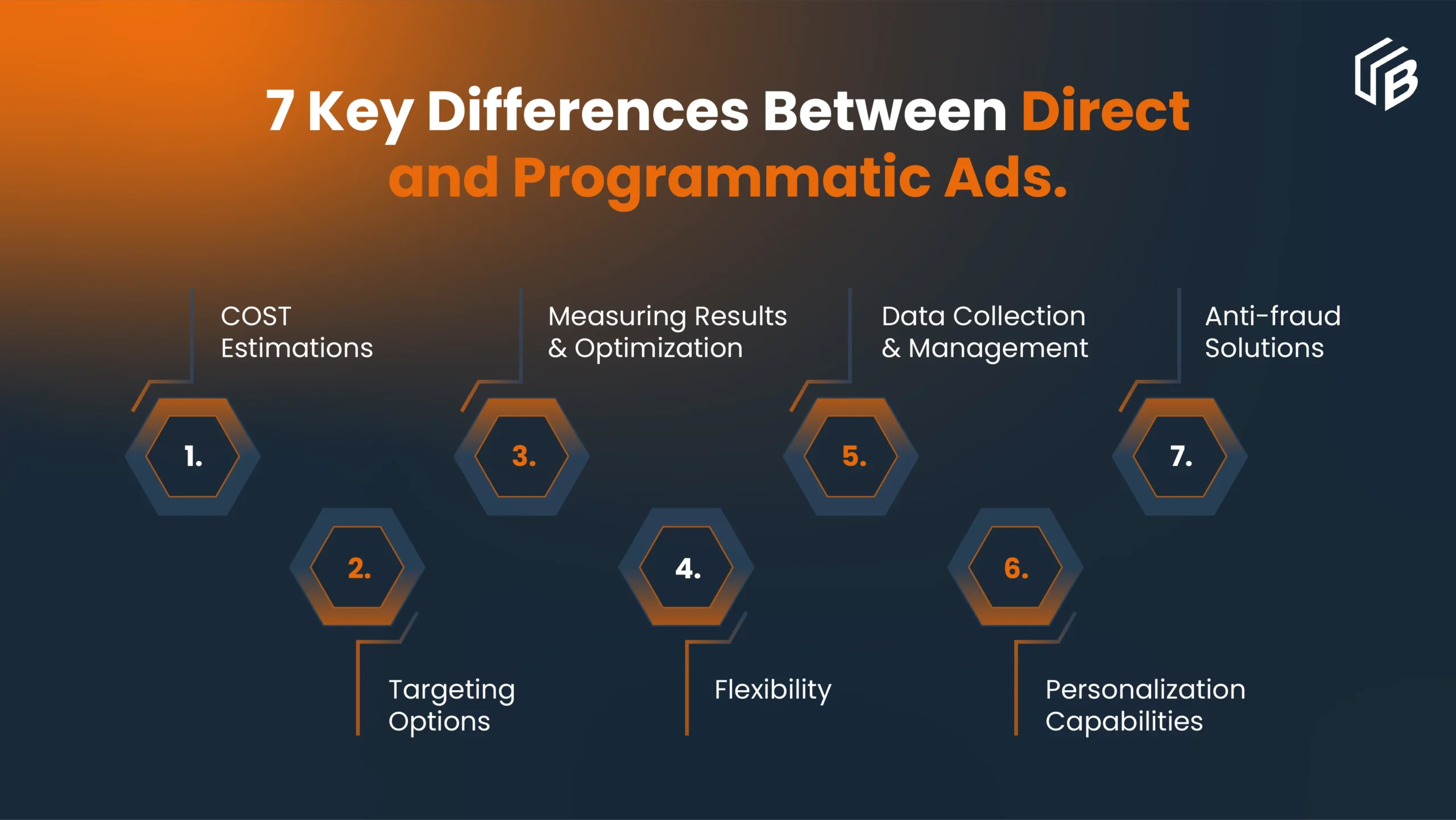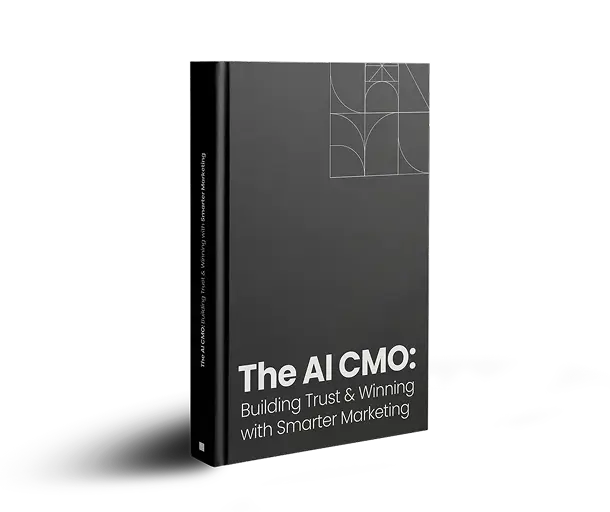
Highlights
- Understand how direct vs. programmatic ads differ in process and performance.
- Dive into 7 key differentiators that impact your ROI.
- Learn when to prioritize programmatic vs direct buying.
- See how enterprise programmatic ad solutions can scale your campaigns.
- Discover how hybrid strategies harness both methods.
If you’ve ever debated direct vs. programmatic advertising, you’re in good company. As ad tech matures, programmatic is no longer niche, global programmatic spend reached the high hundreds of billions in 2024 (Statista estimates ~$595B) and is forecast to keep growing through 2025–2026. Programmatic now accounts for the vast majority of display ad dollars, nearly nine in ten display ad dollars worldwide in 2025. According to Insider Intelligence, programmatic video and CTV are major drivers inside that growth. These shifts mean the choice between negotiated, brand-safe direct buys and fast, data-driven programmatic buys is increasingly about use cases, not which approach is “future-proof”.
What is the Difference Between Direct and Programmatic Ads?
Direct ads are purchased through direct deals between advertisers and publishers with fixed terms.
Programmatic ads use automated systems and real-time bidding to dynamically place ads.
In short, the media buying process is what separates direct vs. programmatic ads and manual negotiation vs. algorithmic auction.
Who Uses Each Model?
- Direct buying is favored when you want premium placements, guaranteed exposure, and brand-safe environments.
- Programmatic advertising is adopted by marketers who want scale, dynamic optimization, and data-driven performance.
Enterprises often adopt a hybrid strategy, using direct for brand control and programmatic for conversion scale.
Why Has Programmatic Grown so Fast?
- Automation & speed: It eliminates many manual steps in ad buying.
- Data-driven targeting: Enables granular segmentation and personalization.
- Performance gains: Programmatic can reduce inefficiencies and wasted spending.
- Market prevalence: Programmatic display now accounts for a huge share of digital ad spend.
Because of these advantages, many view programmatic advertising vs. direct buying as evolution rather than replacement.
Where Does the Ad Buying Take Place?
- Programmatic vs direct buying: Programmatic occurs via DSPs, SSPs, exchanges, and automated infrastructures.
- Direct buying happens through deals between the advertiser and publisher, often outside auctions.
- There’s also programmatic direct (or guaranteed programmatic), combining the guarantees of direct with automation.
When Should You Choose One Over the Other?
- Use direct ads when placement, brand safety, or alignment with publisher context is critical.
- Use programmatic advertising when you require flexibility, retargeting, or performance metrics.
- Most mature strategies adopt both direct for anchor placements and programmatic for reach and conversions.
How do They Differ? 7 Key Differences Between Direct and Programmatic Ads

| Factor | Direct Ads | Programmatic Ads |
| Cost Estimation | Fixed CPM, predictable pricing | Auction-based bids, dynamic pricing |
| Data Collection & Management | Limited to publisher data or third party | Integrated DMPs, real-time data feeds |
| Targeting Options | Publisher segments, contextual | Behavioral, lookalike, retargeting, geo, etc. |
| Personalization Capabilities | Minimal customization | Dynamic creative optimization per user |
| Measuring & Optimization | Post-campaign reporting, limited control | Real-time dashboards, live optimization |
| Anti-Fraud Solutions | Lower risk due to fewer intermediaries | Advanced detection, but exposure to more fraud vectors |
| Flexibility | Rigid, contract-based | Highly agile, change targeting, budgets mid-flight |
Let’s break down a few:
- Cost Estimation: Direct buys offer stable CPMs; programmatic pricing fluctuates depending on bidding and competition.
- Targeting & Personalization: Programmatic allows layering of data signals.
- Measurement & Optimization: Programmatic gives live feedback; direct often gives delayed reports.
- Anti-fraud: Direct has fewer intermediaries. Programmatic ecosystems embed fraud filters and safety tools to mitigate risks.
- Flexibility: Programmatic allows on-the-fly changes, direct tends to lock in terms.
These differences highlight why programmatic is often preferred for efficiency and responsiveness.
FAQs
1. What is the Main Difference Between Direct vs. Programmatic Ads?
Direct ads are manually negotiated and guarantee specific placements; programmatic ads are bought via automated bidding and algorithms.
2. Which is More Cost-Efficient: Programmatic vs Direct Buying?
Programmatic often offers better efficiency through optimized bidding and targeting, though direct buying may justify premium costs in strategic placements.
3. Are Programmatic Ads Suitable for B2B?
Yes, especially at enterprise scale. Programmatic allows you to reach decision-makers with precision, adjust campaigns in real time, and drive measurable ROI.
4. Can Both Methods Work Together?
Absolutely. Using programmatic vs direct ad buying in tandem often yields the best of both worlds: brand-safe placements plus scalable performance.
5. What Enterprise Programmatic Ad Solutions Should I Consider?
Platforms like Google DV360, The Trade Desk, MediaMath, and UnboundB2B’s B2B Advertising services are top choices.
Conclusion
In the debate of direct vs. programmatic ads, one isn’t inherently better than the other. Direct buying gives you predictability and control, while programmatic provides scalability, flexibility, and data intelligence. Most sophisticated marketers wield both, leveraging direct for key placements and programmatic for performance.
Ready to elevate your B2B ad game?
Explore our full B2B advertising solutions at UnboundB2B to see how we integrate display, social, and programmatic strategies.
If you want to learn about real-time case studies and future trends in programmatic advertising, do not forget to check out UnboundB2B’s programmatic advertising ebook for free.
Our blog
Latest blog posts
Tool and strategies modern teams need to help their companies grow.

Master lead scoring by buyer journey stage to qualify faster, predict intent, and con...

Discover the top 10 B2B appointment setting companies in the USA offering expert-led,...

Discover how AI Overviews are transforming B2B demand generation and how marketers ca...





